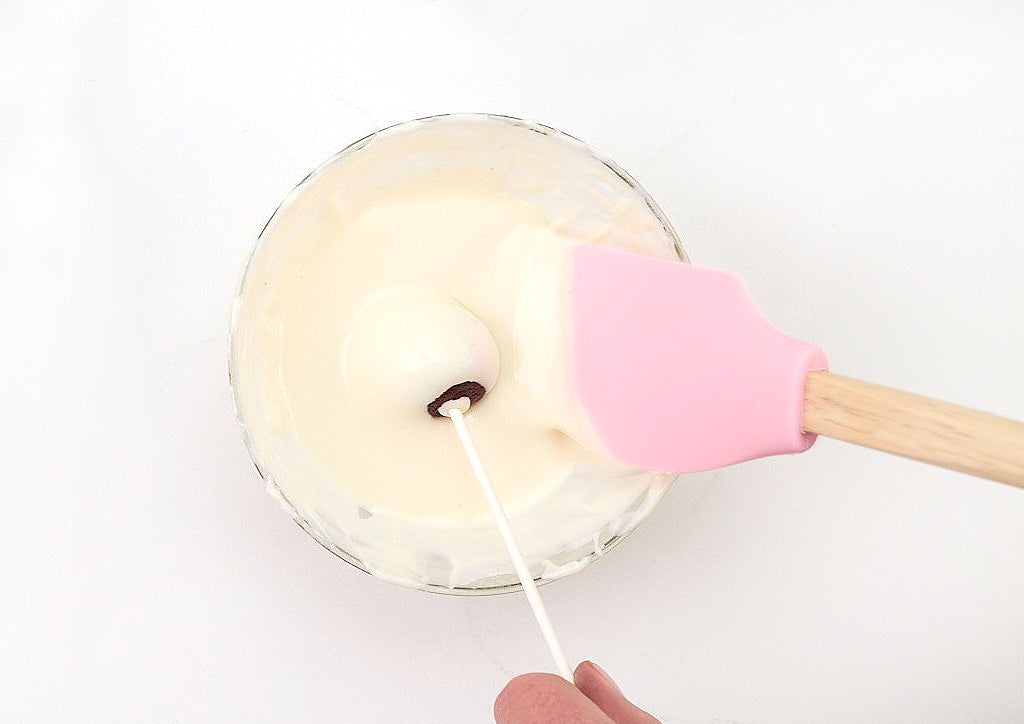Mastering the Art of Tempering Chocolate

The most common method for tempering chocolate is known as the "seed" method and its key steps can be broken down as follows:
- Begin by melting a generous portion of chocolate in a double boiler until the chocolate reaches its optimal temperature. Dark chocolate should be melted until it reaches between 120-130°F. While milk and white chocolate should be melted until it reaches slightly lower temperatures - around 110-120°F.
- Once your chocolate has reached its optimal temperature, incorporate a small amount of finely chopped, unmelted chocolate into the double boiler and stir until smooth. This unmelted chocolate is known as the "seed" chocolate and should constitute approximately 10-15% of the total weight of your chocolate.
- Continue stirring the chocolate until it cools to the ideal tempering range. For dark chocolate the tempering range is between 82-84°F and for milk or white chocolate the tempering range is between 75-80°F. I like to use a digital kitchen thermometer to ensure that my temperature is accurate. However, you can also use the "touch test", which involves dipping a clean spoon into the chocolate and touching the chocolate with your fingertip. The chocolate should feel cool to the touch but still be in liquid form.
- Once at the proper temperature, the chocolate enters the tempering stage. To maintain this state, keep the chocolate within the specified temperature range until ready for use. If the chocolate begins to harden, gently reheat it to the appropriate temperature, then allow it to cool back down to the tempering stage.
Other Tempering Methods
- Aside from the seed method, a couple of alternative techniques for tempering chocolate can easily be practiced in your home kitchen: Tabling Method: This traditional method involves pouring the melted chocolate in a thin layer onto a cool, flat surface (such as a marble slab or granite countertop). Use an offset spatula to move and spread the chocolate back and forth across the surface until it reaches the desired temperature.
- Microwave Method: Melt small amounts of chocolate in short intervals (between 10 to 30 seconds). Stir between each heating cycle until the chocolate is fully melted and has reached its optimal temperature. Continue to stir, adding small amounts of unmelted chocolate, until the chocolate has cooled to the appropriate tempering range.
Different Types of Chocolate
Tempering conditions vary depending on the type of chocolate you are melting:- Dark Chocolate: Dark chocolate possesses a cocoa content ranging from 60-99%. It typically contains cocoa solids, cocoa butter, and sugar. Optimal tempering temperature: 82-84°F.
- Milk Chocolate: Milk chocolate possesses a cocoa content ranging from 10-50%. It typically contains cocoa solids, cocoa butter, milk solids, and sugar. Optimal tempering temperature: 75-80°F.
- White Chocolate: White chocolate possesses no cocoa solids. It typically contains cocoa butter, milk solids, and sugar. Optimal tempering temperature: 75-80°F.
Pro Tips for Success
- Use a thermometer to ensure precise temperatures, especially for milk and white chocolates. Milk and white chocolates contain a higher level of cocoa butter and milk fat, making them more susceptible to burning.
- For best results, use the highest quality chocolate that is available. High quality chocolate is made with real cocoa butter, pure flavors, and natural ingredients. Poor quality chocolate tends to not temper as well and can bloom more easily than high quality chocolates.
- Start small when learning how to temper chocolate. Remember that practice makes perfect to master any skill or technique, so it is best to explore this craft using small batches of chocolate. Be prepared to throw out a batch of chocolate if it is not tempered correctly and has not achieved that smooth, glossy finish!
- If you have tempered your chocolate and a few chunks remain, slightly and slowly raise the heat of your chocolate. Stir continuously until the chunks dissolve completely. Return the chocolate to the tempering temperature. If all else fails and chunks remain in your melted chocolate you can always stir in a small amount of coconut oil.

Paula
Crumble Crate is the culmination of years of experimenting with cooking and baking in my home kitchen. Since I was a small child, I found a simple pleasure in creating fresh delicious treats and sharing them with my family and friends. As life became more complicated, the basic task of baking in my kitchen became an even more critical and comforting sanctuary.I want to share this joy of baking with you so that you too can experience the bliss you feel when you create and share fresh baked goodies with your loved ones. My goal is for us to explore baking together and take the stress out of the process so that you can decompress and learn to find refuge in your kitchen. I can’t wait to begin this baking journey with each of you!






